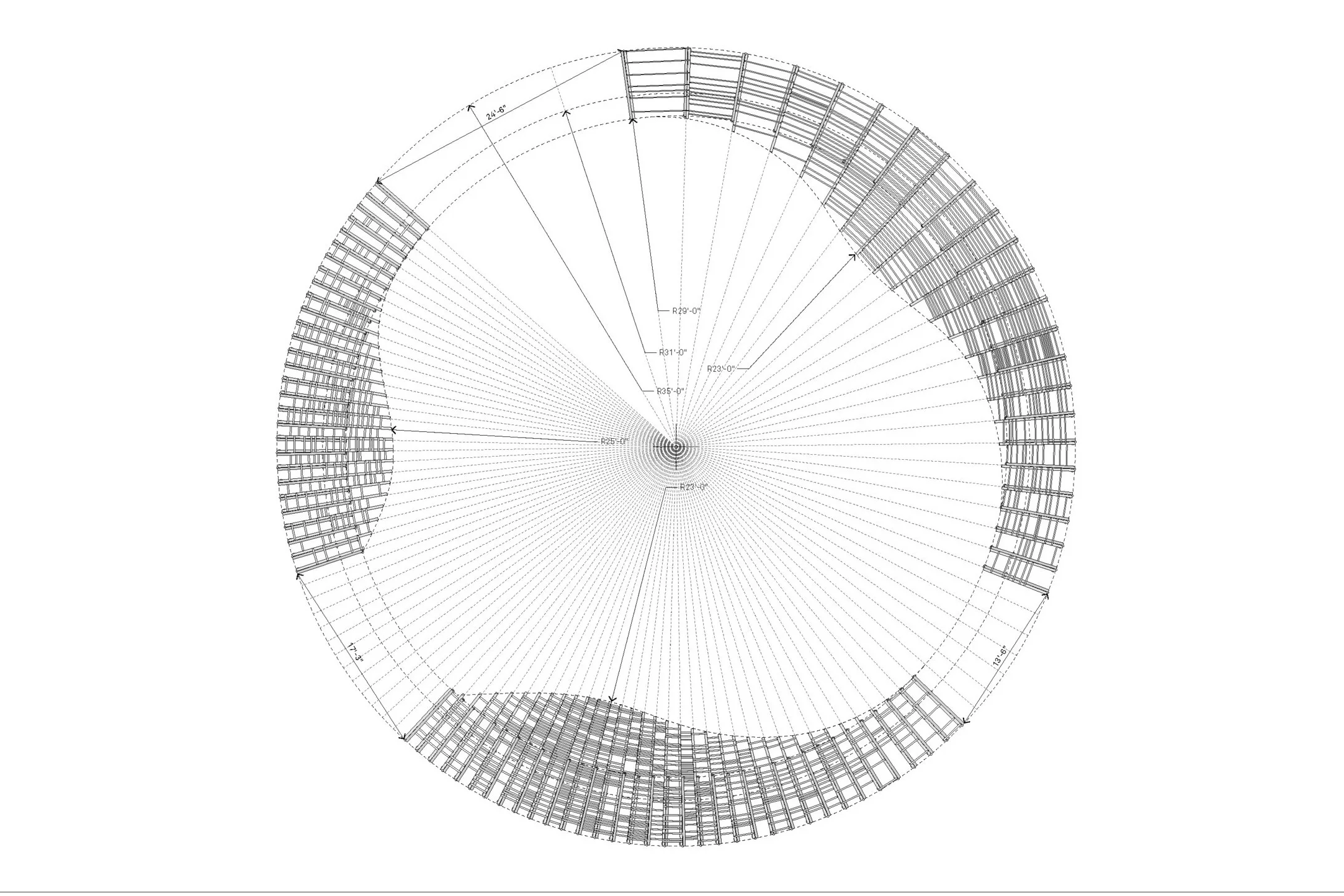Inspired by wood fencing as the simplest form of outdoor enclosure, Fenced creates a grand outdoor room based on the plan of Howard van Doren Shaw’s original ring. The ring becomes an ephemeral public space that flowers within the Ragdale campus. The structure allows for the varied display of the talents at Ragdale – giving artists the spaces to showcase their work. Fenced is a celebration of the Ragdale Estate; it does not impose on either the land or the history it sits on, but rather gracefully places itself in space and time.
DETAILS
Competition Entry
Ragdale Circle
TEAM
Jeffrey Allsbrook, Silvia Kuhle, Denisa Buzatu
Renderings ©Standard
©2019 Standard®
Fenced makes a space for outdoor occupation around the clock, becoming part of the rhythm of life at the Ragdale Foundation . It’s inspired by the passions of the Ragdale residents, and the history of the Ring as a performance space. Oscillating between architecture and sculpture, it creates a theater of public space for daily use: yoga and meditation in the early morning; school children, public readings, open studios during the day and into the afternoon, to live performances and movie screenings in the evening and night. Engaging the artists-in-residence, the Ragdale ethos can be shared with the public in the Main Stage. The Kids Stage offers the Ragdale in Schools program a special place to expose kids to the arts, and a venue to show or perform their work. Through its occupation and use, light and shadow create unique experiences throughout the day. Flatness and distortions contribute to the dialogue between architecture and landscape as perceived by use.
As in Shaw’s work, Fenced seeks a connection between architecture and nature. Nature - the sky and the surrounding grove of trees - is the element of the composition that illuminates and encircles the wood structure. The structure in turn frames views of nature, mediating between openness and enclosure. The circular form of the ring is a stable datum underlying the modulated movement of the wooden frame. The interest lies not in the rigidity of the circle, but rather in its fluidity. This circle is mutable, and relies on its perfect shape to allow for continuous change. The interaction with the space is always different. The play of light and shadow, the grain, knots and other imperfections in the wood, and the parallax effect seen by moving through the space, all play against the structure’s transparency to the trees and sky beyond. It’s an analog experience that creates a diversity of textures and light.
Reflecting Shaw’s interest in the ideals of the Arts and Crafts movement, “that favored handmade craftsmanship and simple, honest design,” Fenced is made by hand, an expression of its own construction. Designed to have a high visual impact with a small environmental footprint, Fenced is assembled piece by piece, making the whole greater than the sum of its parts. Through the minimal means of repetitive timber sticks of varied length, enclosure and shelter is formed, and the structure becomes its own ornamentation.
The concept derives from the simple jack leg or buck fence, a line of diagonal wooden Xs linked together with wooden rails. Forming a perfect circle in plan, variables of frequency, angle, and length are manipulated to create a fence that envelopes the Ragdale Ring in three dimensions. The wooden members are more densely spaced at the low end of the structure, and they gradually open up as they round the ring. Wooden rails form a lattice-like screen over the inward leaning legs of the wooden crosses, forming an implied surface and shelter. The outward leaning members extend through this implied surface, forming a bowl-like outer ring. The cross section of the structure is in constant flux around the ring, varying the form and scale of the enclosure. Through changes in the angle and the length of the wooden cross members, the fence becomes a shaded stage, a low shelter, and a bench. A smaller, tunnel-like space is also formed under the fence, ripe for exploration by children.
Fenced is designed to be constructed by a small team using common portable tools. The wooden crosses are weighted by prefab concrete bases, and bolted with a single connection. The wooden rails are then screwed to the inward leaning cross members. Assembled piece by piece, the structure can later be disassembled in the same manner, by unscrewing and unbolting. The wood can be donated to Habitat for Humanity or another organization interested in construction materials. Created with construction lumber typical in the US, Fenced is hand-made, low tech, and grand in scale. Fenced is conscious of its environmental impact. The timber framing elements are renewable and re-usable. The structure rests lightly on the ground, expressing its provisional nature.









